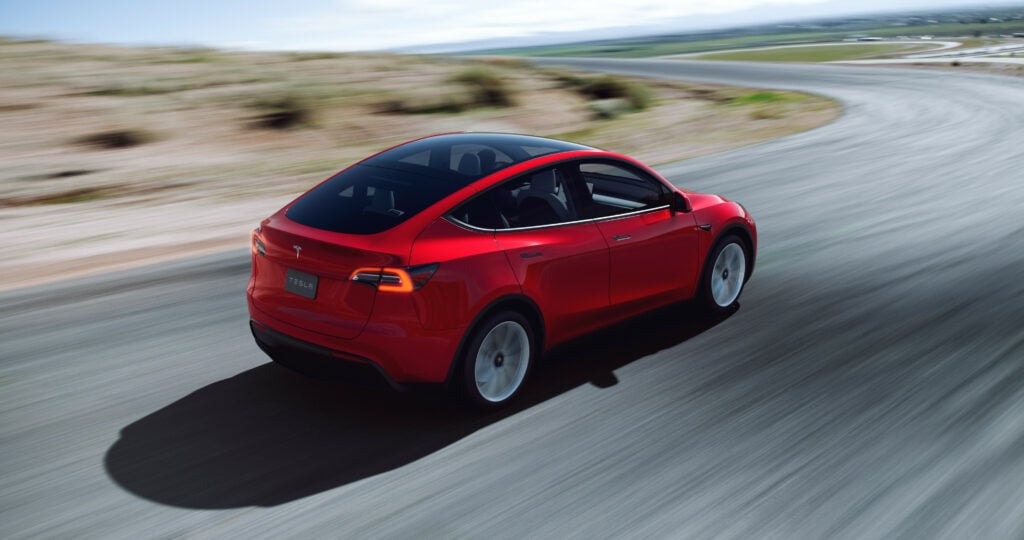Gas prices are up over 50% since last year, and that has more drivers looking to an electric vehicle for their next car purchase. The average EV costs a whopping $19,000 more than internal-combustion engine (ICE) vehicles in 2021, and that figure has surely risen after a dozen price hikes from Tesla and MSRP increases from the rest. So, affordability is hard to come by when shopping for an EV. Fortunately, EV incentives can make a difference, and a big difference depending on where you live.
First and Foremost: The Federal EV Tax Credit
In the United States, the federal EV tax credit remains in effect for up to $7,500 off of next year’s taxes. Revisions to the electric vehicle tax credit failed passage in 2021, but legislators are looking into other pathways for revisions to the law. (Stay up to date with the latest here.)
The current federal EV tax credit code was written with a 200,000 vehicle cap per automaker. Once an automaker sells 200,000 electric vehicles, a step-down of the credit begins to phase out the incentive before it completely disappears. How does the EV tax credit phase out? The credits continue at full value until the second quarter after the 200,000 sale threshold is reached. For the next six months, the EV tax credit steps down to half of the maximum value ($3,750), followed by one-quarter value for the final six months ($1,875).
These are the automakers no longer eligible for the federal EV tax credit:
- Tesla (surpassed 200,000 sales in 2018)
- General Motors (surpassed 200,000 sales in 2019)
Others have been slow to catch up, but the industry is going all-in on EVs.
These are the next automakers expected to reach the 200,000 sale cap for the federal EV tax credit:
- Toyota (expected to begin phase-out in late 2022)
- Nissan (expected to begin phase-out in 2023)
- Ford (expected to begin phase-out in 2023)
Toyota’s place on the list is due in large part because of plug-in hybrid (PHEV) sales contributing to sales totals.
See the latest federal EV tax credit phase out numbers at EVAdoption, an amazing resource full of head-turning data.
States With the Best Electric Vehicle Incentives

New Jersey EV Incentives
- New Jersey’s Charge Up program exhausted funding for the $5,000 rebate, but a sales tax exemption remains. Considering how expensive EVs remain, the value of New Jersey’s sales tax exemption ranges from $2,500 for a vehicle like the Chevy Bolt to nearly $8,000 for a luxury EV like the Lucid Air. Find out more here.
California EV Incentives
- $2,000 rebate (Tesla and higher-priced vehicles such as Lucid and Rivian do not qualify). Details and qualifying vehicles can be found here.
Colorado EV Incentives
- $2,500 state tax credit: Colorado’s EV state tax credit will step down to $2,000 in 2023, where it will remain until being eliminated at the end of 2026. Leases qualify for $1,500. Learn more here.
- Xcel Energy EV rebate: $5,500 in upfront rebates for new electric vehicles and $3,000 for used models; maximum vehicle price of $50,000. Learn more here.
Connecticut EV Incentives
- Incentive amounts currently range from $4,250 for an eligible new battery electric (BEV), $2,250 for a plug-in hybrid electric (PHEV), and up to $9,500 for a fuel cell electric vehicle (hydrogen-powered) when a Standard Rebate is combined with Rebate+ for income qualified individuals. Learn more here.
Massachusetts EV Incentives
- Receive $2,500 for a new electric vehicle, and $1,500 for a new plug-in hybrid electric vehicle. Purchases must be made in-state. Learn more here.
Oregon EV Incentives
- Up to $2,500 for the purchase or lease of a qualifying new EV. Low- and moderate-income Oregonians can save an additional $5,000 on qualifying new or used EVs. Learn more here.
New York EV Incentives
- The Charge NY initiative offers electric car buyers the Drive Clean Rebate of up to $2,000 for new car purchases or leases. Learn more here.
Delaware EV Incentives
- A $2,500 rebate is available for the purchase of electric vehicles that do not exceed $60,000 in cost. Plug-in hybrids qualify for $1,000. Learn more here.
Phase Outs and Revisions?
EV incentives are subject to frequent change at the whims of legislators and the limits of funding. Stay informed as you consider your EV purchase. Several states around the country have pending legislation that may affect electric vehicle incentives in the year to come.
EV cost of ownership largely depends on availability of incentives, at least until EV prices come down to cost parity with ICE. When will EVs get cheaper? Not in 2022, and it may be a few years before raw material costs and supply shortages settle into a new normal. In fact, that may be just in time for battery shortages if electric vehicles become as popular as many would suspect.
What do you think? Are state and federal incentives keeping the electric dream alive? What would happen to automaker’s half-trillion dollar electrification plans if incentives were to evaporate overnight? It’s a scary thought considering what’s at stake for them.













0 Comments